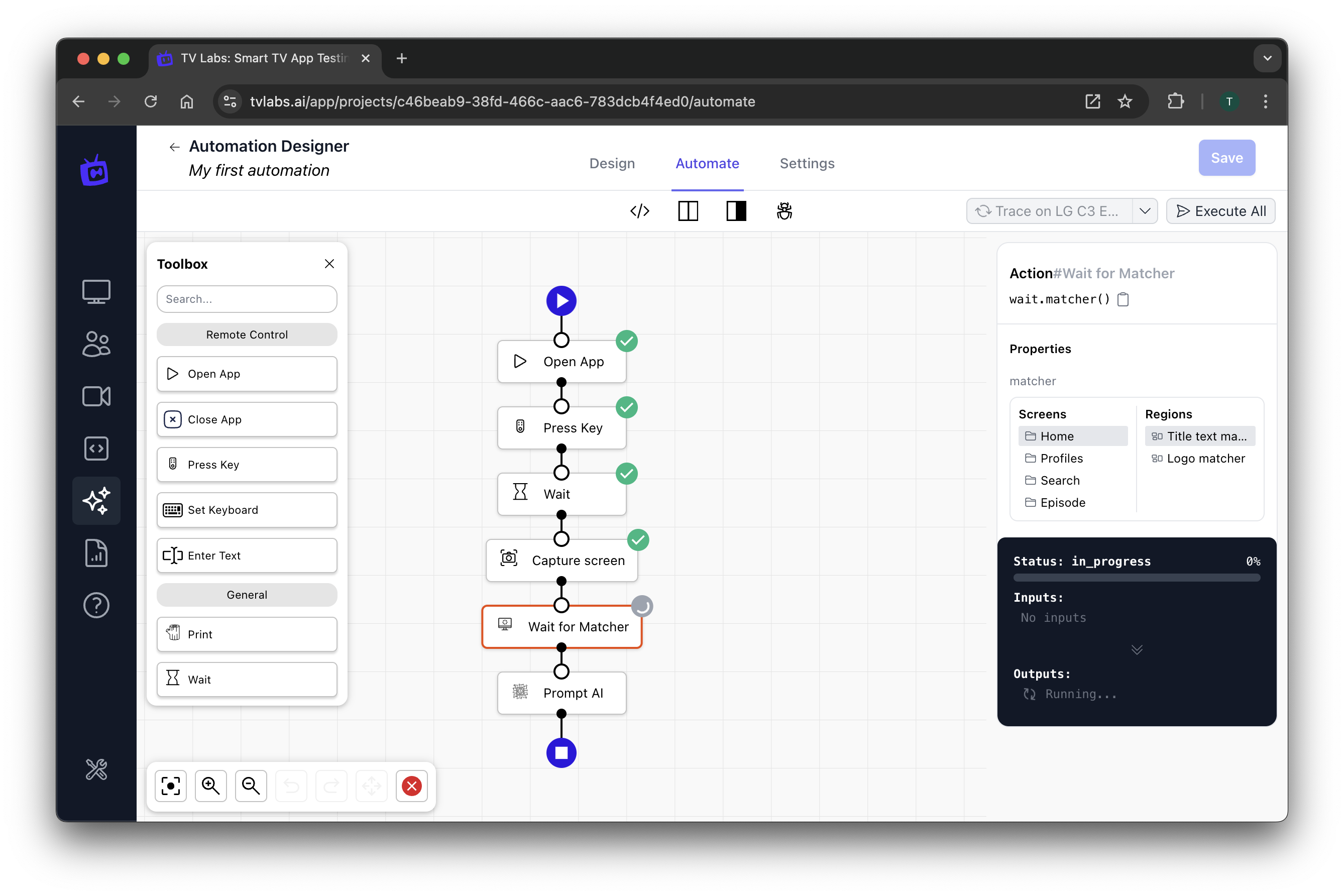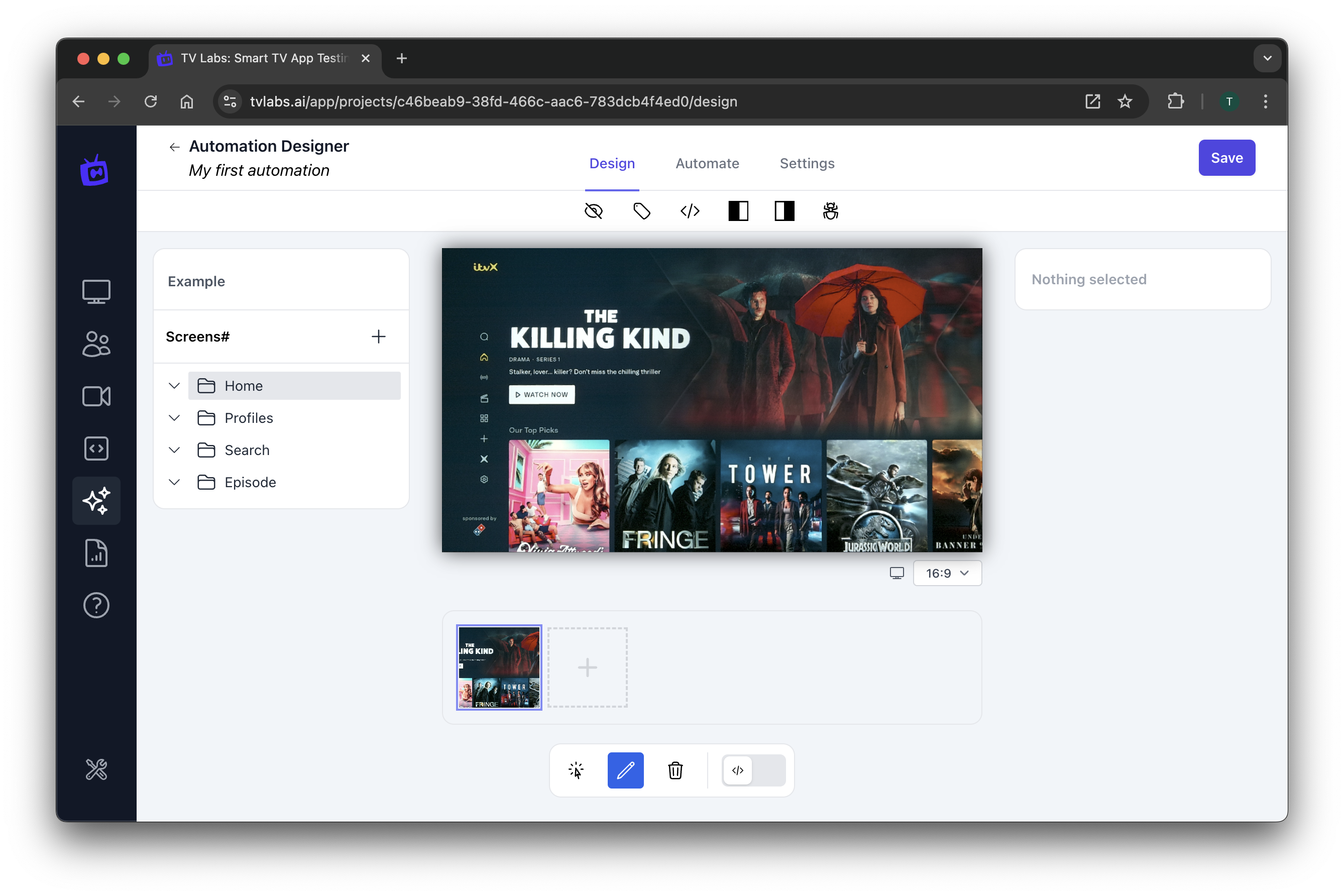What is TV Labs Automation?
No-Code Workflow Designer
At the heart of our automation solution is the no-code workflow designer. This intuitive, visual tool democratizes test creation, making it accessible to team members regardless of their coding expertise.
 Figure 1: Workflow Designer in action
Figure 1: Workflow Designer in action
Key features include:
- Visual Building Blocks: Drag-and-drop pre-built components for common actions like navigation, text entry, and screen validation.
- Real-Time Visualization: See your test workflow come to life as you build it.
- Cross-Platform Compatibility: Design once, run anywhere—your workflows are automatically adapted for different TV operating systems.
- AI Integration: Leverage our AI capabilities to enhance your tests with intelligent content analysis and decision-making.
Core Components
Our no-code designer includes a variety of functional blocks:
- Remote Control Simulation: Emulate button presses and text input.
- App Management: Programmatically open, close, and switch between apps.
- Conditional Waits: Pause execution until specific conditions are met, like text or image appearance.
- Assertions: Validate that your app behaves as expected under various conditions.
- Screen Analysis: Capture and analyze on-screen content using our advanced vision API.
- Performance Measurement: Automatically record and track key performance metrics.
Visual Screen Markup
The Region Designer is a crucial component of TV Labs automation, enabling precise visual testing across different TV models and resolutions. Here's what you need to know:
 Figure 2: Region Designer interface
Figure 2: Region Designer interface
- Visual Markup: Easily mark up specific areas of your app's UI for targeted testing.
- Flexible Matchers: Create text, color, and image matchers to verify UI elements.
- Cross-Device Compatibility: Define regions that work consistently across various screen sizes and resolutions.
- Integration with Workflow: Seamlessly use defined regions in your test workflows for robust visual assertions.
By using the Region Designer, you can create tests that mimic human visual perception, ensuring your app looks and functions correctly across a wide range of devices.